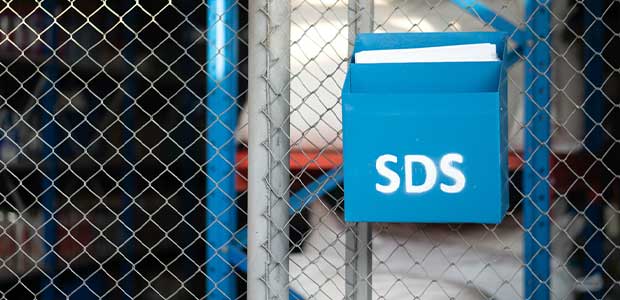
Taking the Hazard Out of Hazardous Chemicals
OSHA defines a 16-section format for all safety data sheets to adhere to.
- By Holly Mockus
- Sep 01, 2021
Chemicals are used in most workplaces, ranging from household cleaning products to extremely flammable gasses and toxic metals. It Is ironic that the same chemicals that help make safe products and keep work environments clean and healthy can also be dangerous, even deadly, if used incorrectly.
Employers have clear responsibilities regarding chemical use: appropriately labeling containers, keeping safety data sheets (SDS) updated and available and providing relatable employee training. These are not only ethical responsibilities, but they are also legal requirements, as specified in OSHA’s Hazard Communication Standard 1910.1200(e).
The 3-1-1 on SDS
Proper labels and SDS are critical. OSHA defines a 16-section format for all SDS to adhere to. The uniformity helps users find relevant information quickly–especially if they are familiar with SDS. Some safety managers find the format easy to follow, others may need some assistance when reviewing an SDS.
Four of the 16 sections are non-mandatory. If a chemical manufacturer did not include these sections in its product SDS, but that chemical is in use at your facility, it could be a good idea to insert this information. Information on proper disposal, transportation and ecological impact should be included to ensure employees know how to proceed during these situations.
Companies that have all of their SDS on file may still benefit from a third-party review to find gaps in existing materials and work processes. Vet any consultant’s credentials and nothing beats a real conversation to help find a good fit for your needs.
SDS is Step One: (Over) Communication Must Follow
We all know the riddle: If a tree falls in the woods with no one around, does it make a sound? Less of a riddle is this question: Does a perfectly written SDS make a safer workplace all on its own? “No” is the clear answer.
Your workplace is only as safe as your people are trained. A perfect volume of SDS, accurate labels and fail proof processes on paper are of no use if the workers are not trained to utilize them properly.
Successful training requires great content, engaging delivery and seamless documentation to keep track of any employees who missed training or need additional assistance. So, let’s take a closer look at these three elements.
Chemical Safety: What Employees Need to Know
This article originally appeared in the September 2021 issue of Occupational Health & Safety.